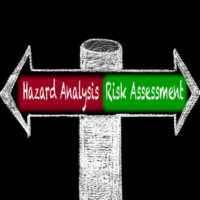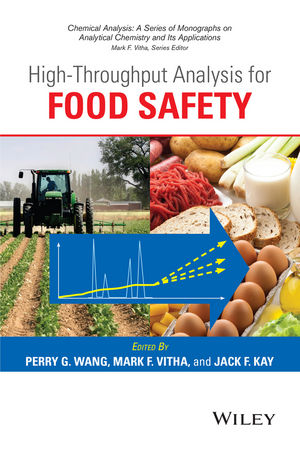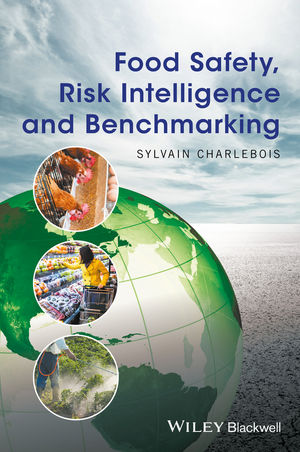Concerns Related to International Risk Analysis

It is no accident that harmonization of food legislation, food standards and a re-evaluation of food-control procedures is underway in many countries. Some reasons for these actions include resource constraints, meeting international trading rules, shifting responsibilities from official control agencies to industry, etc. These reasons may be sufficient in and of themselves to warrant this review; however, the public is frequently reminded of additional problems to the extent that their confidence is undermined and their sensibilities shaken. Food control authorities are seeking answers to the alarming statistics of foodborne illness and the ever-increasing evidence of emerging pathogens and treatment-resistant microorganisms.
The problem presented by hazards in food in today’s global trading environment is that now trade has virtually no boundaries. Hazardous food products shipped today from one part of the world can be consumed in a country on the other side of the world within a few days. Recent food product hazards in North America concerned imports from China, California-grown spinach, Mexican peppers and tainted Canadian sandwiches. This potential problem affects all countries involved in international trade. Many food-poisoning outbreaks have been related to imported food products. However, many of the reported outbreaks are also associated with domestically produced products. Further, the outbreaks are not isolated in developing countries. Industrialized countries are also experiencing outbreaks of foodborne illness but don’t always activate their food safety programs to respond to these emergencies.
Considerable progress to strengthen food safety systems has been achieved in many countries, highlighting the available opportunities to reduce and prevent foodborne disease. However, unacceptable rates of foodborne illness still remain, and new hazards continue to enter the food supply. A key disci-pline for further reducing foodborne illness and strengthening food safety systems is risk analysis. Understanding the hazards in foods and knowing the risks they pose to public health are part of the risk analysis process, utilized in making the decisions that are needed in food control to establish acceptable levels of risk and implement measures to maximize public health protection.
Since the Agreement on the Application of Sanitary and Phytosanitary Measures (SPS Agreement) came into force over a decade ago, the importance of risk analysis has increased. For many years, both the Food and Agriculture Organization (FAO) of the United Nations and the World Health Organization (WHO) have worked together to increase the awareness of risk analysis principles, both as a tool for national food safety authorities and also in the provision of scientific advice and evaluations.
To achieve a method of control that will facilitate international adherence to risk analysis programs, uniform mechanisms need to be established. This will allow an effective response to food safety issues that would lead to increased international security, prosperity and quality of life. A major deterrent to a viable response mechanism is the lack of recognized food safety measures to those that are presently in place for industry. Also, international risk analysis is substantially different from risk analysis at a national level. Governments have now recognized the importance of an integrated approach to risk management that can be applied to all decision-making processes.
Risk Analysis and its Components
Risk analysis is used to develop an estimate of the risk to human health and safety, to identify and implement appropriate measures to control the risks, and to communicate with stakeholders about the risks and measures applied.
Risk analysis, as defined by the Codex Alimentarius Commission (CAC), the Office Internationale des Ipizooties and the International Plant Protection Convention involves three major activities—risk assessment (being the determination of degree of risk involved); risk management (establishing if and what measures are required to mitigate the risk); and risk communication (ensuring that stakeholders are involved in the process).
Risk assessment is considered to be the “science-based” component of risk analysis, while risk management is the component in which scientific information and other factors, such as economic, social, cultural and ethical considerations, are integrated and weighed in choosing the preferred risk management options. In fact, risk assessment may also involve judgments and choices that are not entirely scientific, and risk managers need a sound understanding of scientific approaches used by risk assessors.
Risk analysis methods differ based on views of the many different approaches that scientists may consider to be appropriate to the process. Central to the process is the basic understanding of the definitions of the various components and the terminology used in the process and protocol followed. Establishing acceptable levels of risk in foods at the national level is subject to (a) the identification of risk, (b) risk prevalence, characteristics and conditions of exposure, (c) the health status of the various segments of the population at risk and (d) the final integration of assessment results with what may be the resulting impact or adverse effects. The uncertainties that are or may be related to the entire process need to be taken into account. This process is dependent on the availability of sound, relevant scientific evidence and data that are related to all aspects of risk assessment.
The risk analysis methods presently in use have evolved and are utilized by national risk experts for national purposes. Risk assessment is the most sophisticated and highly developed procedure of the three risk analysis components and is best understood by an experienced risk assessor.
CAC and Related Expert Committees
Both the CAC and WHO recognized the need to establish a harmonized risk analysis methodology. Risk analysis within the Codex system is carried out by a number of different bodies. Some of these are subsidiary to the CAC and include the Codex Committees on Food Additives and Contaminants; Pesticide Residues; Residues of Veterinary Drugs in Foods; Food Hygiene; Meat Hygiene; Food Import and Export Inspection and Certification Systems; and Nutrition and Foods for Special Dietary Use. These are intergovernmental bodies whose tasks are to prepare draft standards, guidelines and recommendations for consideration by the CAC.
To harmonize the existing methodology in risk analysis, Codex requested the assistance of the FAO and WHO in providing the necessary expert advice, guidance and recommendations. Independent expert bodies, including the Joint FAO/WHO Expert Committee on Food Additives for additives, chemical contaminants and veterinary drug residues and the Joint FAO/WHO Meeting on Pesticide Residues for pesticide residues, routinely provide scientific input to the Codex decision-making process. Codex committees also occasionally draw on advice from other bodies outside the Codex system, for example, the International Commission on Microbiological Specifications for Food.
Codex Committees act as risk managers in that they organize and direct the decision-making process, weigh the results of the risk assessments and other legitimate factors and recommend standards to protect public health and ensure fair practices in the food trade. Codex does not implement risk-mitigating measures. Implementation, enforcement and monitoring activities are within the responsibilities of Codex members, governments and institutions.
National food safety authorities, in contrast, are generally responsible for carrying out risk analysis in its entirety. Some governments have their own institutions and infrastructure for conducting risk assessments, choosing among risk management options, implementing and enforcing decisions, and monitoring and reviewing the impact of decisions. Other countries may have fewer resources available to carry their own capacity; components of risk analysis carried out at the international level can be usefully applied in the national context.
Benefits of Food Safety Risk Analysis
Applying risk analysis to food safety problems offers many advantages. It supports making decisions that are in proportion to the public health risks involved and systematic evaluation of likely impacts of specific measures chosen to manage those risks. Risk analysis allows the costs of compliance to be compared with expected benefits and supports setting priorities among different food safety problems. Using risk analysis where practical and feasible, governments meet their obligations under the SPS Agreement and strengthen their basis for trading foods internationally. For instance, by helping to objectively demonstrate the absence of hazards or the effective control of hazards to produce safe food, risk analysis provides a solid basis to increase trade access to new markets. In addition, risk analysis identifies gaps and uncertainties in scientific knowledge on risks, which can help set research priorities and contribute toward improved understanding of food-related impacts on public health over time. For all of these reasons, risk analysis is the preferred approach for establishing food safety control measures.
Approaches to Deal with Risks and Challenges
The successful use of the risk analysis framework requires countries to have the essential foundations of a food system in place. This includes enabling food laws, policies, regulations and standards, efficient food safety and public health institutions and mechanisms for coordination between them, operational food inspection and laboratory services, information, communication and training, infrastructure and equipment, human resource capacity, etc. Other essential conditions necessary for a government to implement successful risk analysis include having government officials and decision makers at policy levels, as well as those at operational levels, who understand risk analysis and the value it adds to the public health perspective; having sufficient scientific capacity to carry out needed risk assessment in the national context; and having the support and participation of key interested parties. When these conditions are met, food safety authorities have much to gain by adopting risk analysis as a discipline for their food control activities.
The following issues and proposed solutions require a well-developed program to deal with technical and scientific needs:
1. Government, industry and consumer groups to work together to reduce the threat of foodborne illness in their countries. Government agencies to work, manage and mitigate risks in collaboration with their partners.
2. Incomplete scientific knowledge related to the nature and transmission of emerging diseases while inadequate animal and veterinary public health infrastructure in many countries also contribute to the complexity of managing these diseases. Regulatory government agencies to work in close partnership with the animal health community, livestock producers and the international community in promoting early detection, reporting and control of disease.
3. Lack of assistance by international institutions to help develop international trading rules to ensure the protection of human, animal, ecosystem and plant life. Retain, strengthen and reinforce rules and science-based approaches within an international regulatory framework to help countries achieve their regulatory objectives and to protect countries from discriminatory and unnecessary barriers.
4. Inconsistencies among various government agencies jurisdictions weaken the domestic legislative framework. Governments to pursue mechanisms that modernize its legislative framework.
5. Governments identify measures to reduce threats to the animal and plant resource base. A globally applicable risk estimate cannot be produced for all countries. Countries with a healthy, sustainable plant and animal resource base associate this with social objectives, the environment and the economy. They use a number of measures to identify and reduce threats to the animal and plant resource base to incorporate risk assessment in their profiles, which range from surveys and movement control to eradication of the problem and an emergency response mechanism.
6. Lack of emergency preparedness and effective response that could compromise food safety and integrity. Governments and industry need to develop rapid, effective action programs to protect food, plants, aviary and aquatic animals from accidental or intentional events that could compromise their safety and integrity. Strong cooperative relationships are critical to the international success of these risk-based measures.
7. Governments are challenged by frequent lack of strategic decision-making. Performance information and developing mitigation strategies will improve the ability of governments to strengthen their risk management approaches.
8. Resource management, by government and industry, of strategic financial and human resources is not always compatible with the need to develop risk-related strategies. International activities are dependent on national and regional expertise and data. Ensure a sustainable financial and human resource base for adequate development.
It is recognized that certain risks will always exist. The goal of these strategies is to reduce the risks and improve the capacity to manage them. Any residual risks could be reduced over time with careful planning and the implementation of risk mitigation strategies.
Considerable progress to strengthen food safety systems has been achieved in many countries. Risk analysis became a key discipline to further reduce foodborne illness and strengthen food safety systems. Harmonized international food standards that protect consumers against unsafe food can provide greater assurance of worldwide consumer health protection and facilitate international trade.
Simon Jol, President of Foodpath Inc., is responsible for market development and client relations. He has been actively involved in applying HACCP principles to the food distribution sector and has extensive experience in the design and installation of environmental engineering systems and food processing facilities.
Alex Kassianenko is a Consultant to Foodpath as a professional food specialist. He has extensive experience in the areas of risk assessment, food safety and quality assurance within academia, industry and government.
Resources:
FAO and WHO. 2006. Food safety risk analysis: A guide for national food safety authorities. FAO Food and Nutrition Paper 87, Rome.
WHO. 1995. Application of risk analysis to food standards issues. Report of a Joint FAO/WHO Expert Consultation, Geneva, Switzerland.
FAO. Food Safety and Quality. Risk analysis www.fao.org/ag/agn/agns/foodcontrol_risk_en.asp
Whitehead AJ. 1999. International food trade, harmonization, and mutual acceptance. In: International Food Safety Handbook: Science, International Regulation, and Control. (eds. Van der Heijden K, Fishbein M, Miller, S), pp. 747-766, Marcel Dekker, New York.
Looking for a reprint of this article?
From high-res PDFs to custom plaques, order your copy today!







